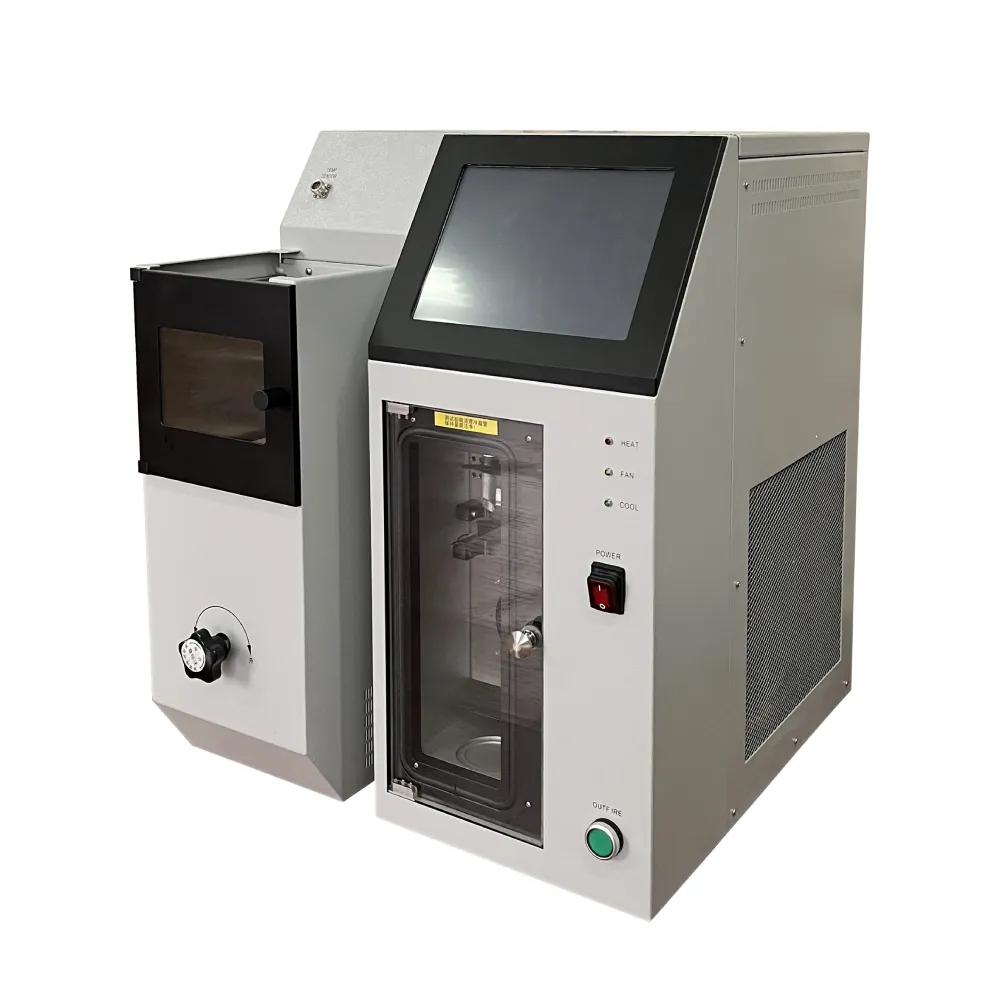TEL:
+86-0312-3189593
 English
English

Telephone:0312-3189593

Email:sales@oil-tester.com

-
 Afrikaans
Afrikaans -
 Albanian
Albanian -
 Amharic
Amharic -
 Arabic
Arabic -
 Armenian
Armenian -
 Azerbaijani
Azerbaijani -
 Basque
Basque -
 Belarusian
Belarusian -
 Bengali
Bengali -
 Bosnian
Bosnian -
 Bulgarian
Bulgarian -
 Catalan
Catalan -
 Cebuano
Cebuano -
 China
China -
 China (Taiwan)
China (Taiwan) -
 Corsican
Corsican -
 Croatian
Croatian -
 Czech
Czech -
 Danish
Danish -
 Dutch
Dutch -
 English
English -
 Esperanto
Esperanto -
 Estonian
Estonian -
 Finnish
Finnish -
 French
French -
 Frisian
Frisian -
 Galician
Galician -
 Georgian
Georgian -
 German
German -
 Greek
Greek -
 Gujarati
Gujarati -
 Haitian Creole
Haitian Creole -
 hausa
hausa -
 hawaiian
hawaiian -
 Hebrew
Hebrew -
 Hindi
Hindi -
 Miao
Miao -
 Hungarian
Hungarian -
 Icelandic
Icelandic -
 igbo
igbo -
 Indonesian
Indonesian -
 irish
irish -
 Italian
Italian -
 Japanese
Japanese -
 Javanese
Javanese -
 Kannada
Kannada -
 kazakh
kazakh -
 Khmer
Khmer -
 Rwandese
Rwandese -
 Korean
Korean -
 Kurdish
Kurdish -
 Kyrgyz
Kyrgyz -
 Lao
Lao -
 Latin
Latin -
 Latvian
Latvian -
 Lithuanian
Lithuanian -
 Luxembourgish
Luxembourgish -
 Macedonian
Macedonian -
 Malgashi
Malgashi -
 Malay
Malay -
 Malayalam
Malayalam -
 Maltese
Maltese -
 Maori
Maori -
 Marathi
Marathi -
 Mongolian
Mongolian -
 Myanmar
Myanmar -
 Nepali
Nepali -
 Norwegian
Norwegian -
 Norwegian
Norwegian -
 Occitan
Occitan -
 Pashto
Pashto -
 Persian
Persian -
 Polish
Polish -
 Portuguese
Portuguese -
 Punjabi
Punjabi -
 Romanian
Romanian -
 Russian
Russian -
 Samoan
Samoan -
 Scottish Gaelic
Scottish Gaelic -
 Serbian
Serbian -
 Sesotho
Sesotho -
 Shona
Shona -
 Sindhi
Sindhi -
 Sinhala
Sinhala -
 Slovak
Slovak -
 Slovenian
Slovenian -
 Somali
Somali -
 Spanish
Spanish -
 Sundanese
Sundanese -
 Swahili
Swahili -
 Swedish
Swedish -
 Tagalog
Tagalog -
 Tajik
Tajik -
 Tamil
Tamil -
 Tatar
Tatar -
 Telugu
Telugu -
 Thai
Thai -
 Turkish
Turkish -
 Turkmen
Turkmen -
 Ukrainian
Ukrainian -
 Urdu
Urdu -
 Uighur
Uighur -
 Uzbek
Uzbek -
 Vietnamese
Vietnamese -
 Welsh
Welsh -
 Bantu
Bantu -
 Yiddish
Yiddish -
 Yoruba
Yoruba -
 Zulu
Zulu
Jan . 14, 2025 10:57
Back to list
flash point testing machine
In the dynamic world of electrical engineering and maintenance, the transformer oil testing machine stands out as an indispensable tool for ensuring the reliability and efficiency of transformers. As transformers are pivotal in the power distribution process, maintaining their optimal performance is crucial. This article sheds light on the critical role of transformer oil testing machines, underlining the expert insights and authoritative practices that surround their use.
Authoritativeness in the sphere of transformer oil testing is reflected in adherence to international standards such as IEC 60422 and ASTM D3487. These standards guide the procedures for transformer oil testing, ensuring consistent and reliable results across different regions and facilities. By complying with these guidelines, transformer maintenance professionals can assure stakeholders of their commitment to quality and safety. Trustworthiness and Reliability Trustworthiness is at the heart of any maintenance protocol involving transformer oil testing machines. The reliability of the results produced by these machines is paramount, as they directly impact the operational decisions and maintenance strategies employed by companies. Manufacturers of these machines also play a critical role by ensuring the accuracy and robustness of their products through regular updates and calibration services. Enhancements and Innovations One of the exciting developments in this field is the integration of IoT and AI technologies into transformer oil testing machines. These innovations allow for the real-time monitoring and analysis of transformer oil, providing insights that were previously unattainable. This advancement not only enhances the speed and precision of testing but also contributes to a more comprehensive understanding of transformer health. Conclusion In conclusion, transformer oil testing machines are vital assets in the electrical engineering domain, enhancing the efficiency and operational reliability of transformers. Their significance is underscored by expert methodologies and real-world applications that have proven their value time and again. By adhering to authoritative standards and embracing technological advancements, these machines offer a trustworthy solution for transformer maintenance, safeguarding the electrical infrastructure that powers modern life.


Authoritativeness in the sphere of transformer oil testing is reflected in adherence to international standards such as IEC 60422 and ASTM D3487. These standards guide the procedures for transformer oil testing, ensuring consistent and reliable results across different regions and facilities. By complying with these guidelines, transformer maintenance professionals can assure stakeholders of their commitment to quality and safety. Trustworthiness and Reliability Trustworthiness is at the heart of any maintenance protocol involving transformer oil testing machines. The reliability of the results produced by these machines is paramount, as they directly impact the operational decisions and maintenance strategies employed by companies. Manufacturers of these machines also play a critical role by ensuring the accuracy and robustness of their products through regular updates and calibration services. Enhancements and Innovations One of the exciting developments in this field is the integration of IoT and AI technologies into transformer oil testing machines. These innovations allow for the real-time monitoring and analysis of transformer oil, providing insights that were previously unattainable. This advancement not only enhances the speed and precision of testing but also contributes to a more comprehensive understanding of transformer health. Conclusion In conclusion, transformer oil testing machines are vital assets in the electrical engineering domain, enhancing the efficiency and operational reliability of transformers. Their significance is underscored by expert methodologies and real-world applications that have proven their value time and again. By adhering to authoritative standards and embracing technological advancements, these machines offer a trustworthy solution for transformer maintenance, safeguarding the electrical infrastructure that powers modern life.
Previous:
Latest news
-
Exploring the Main Types of Industrial Endoscopes and Their Applications Across IndustriesNewsJul.04,2025
-
Testing Equipment Industry Sees Major Advancements in 2025: Smart & Precision Technologies Lead the WayNewsJun.06,2025
-
Applications of Direct Current Generators in Renewable Energy SystemsNewsJun.05,2025
-
Hipot Tester Calibration and Accuracy GuidelinesNewsJun.05,2025
-
Digital Circuit Breaker Analyzer Features and BenefitsNewsJun.05,2025
-
Benefits of Real-Time Power Quality Monitoring Devices for Industrial EfficiencyNewsJun.05,2025



